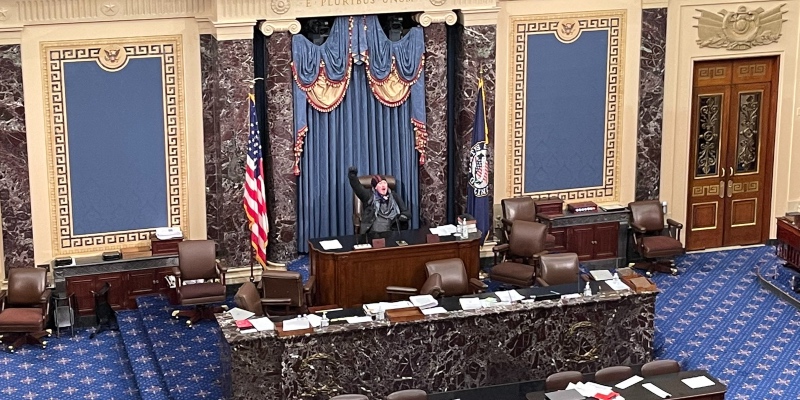
WASHINGTON, D.C. — Alabama’s state flag has been removed from the U.S. Capitol Building because of “Confederate imagery”. The other states that also had their flags removed were Florida, Georgia, Arkansas, and Mississippi. The State banners will be replaced by images of the states’ quarters.
The flags were displayed in the tunnel between the House Office Building and the U.S. Capitol. They were removed during renovations and will not be put back once the remodeling is complete.
Alabama’s state flag will still be able to be displayed in other parts of the building, such as outside representatives’ offices.
“Given the controversy surrounding confederate imagery, I decided to install a new display. I am well aware of how many Americans negatively view the confederate flag, and, personally, I am very sympathetic to these views. However, I also believe that it is not the business of the federal government to dictate what flag each state flies,” House Administration Committee Chairwoman Candice Miller (R-Mich.) wrote in a statement.
Large-scale controversy over Confederate imagery began last year after a white man shot and killed nine African-Americans at a Church in Charleston, South Carolina. The shooter’s social media account had numerous pictures of him posing with the Confederate Battle Flag.

In the aftermath, Mississippi’s flag became an intense target for activists, as the Magnolia State’s flag is the only one to actually bear confederate imagery. Many, including some from Mississippi’s own congressional delegation, called for the flag to be removed from the U.S. Capitol.

After the Charleston Shooting, Alabama Gov. Robert Bentley ordered that all Confederate Battle Flags be removed from the State Capitol.
Alabama’s current state flag has a long history drawing influence from many different heritages. The state adopted its current flag in 1895, stating that it shall be a “crimson cross of St. Andrew on a field of white. The bars forming the cross shall be not less than six inches broad, and must extend diagonally across the flag from side to side.”

Dr. Thomas Owen, director of the Alabama Department of Archives and History interviewed individuals who had been around at the time that the bill was introduced. He concluded that the flag was intended to “preserve in permanent form some of the more distinctive features of the Confederate battle flag, particularly the St. Andrew’s cross.”
Historians have also discovered that the flag drew inspiration from the 60th Alabama Infantry Regiment during the Civil War. The design of the 60th’s regimental flag was a white cross over a blue field with a circle of white stars surrounding the crossing.
Those flags, in turn, were influenced by symbols further back in the state’s history when Alabama was part of Spanish colonial Florida. The Spanish Cross of Burgundy Flag looks almost identical to the current banner of the Yellowhammer State.

In addition, Montgomery is also home to the First White House of the Confederacy, where the first national flag, not the embattled rebel flag, flies. The many national flags of the Confederacy, which go unrecognized by most Americans, do not typically draw ire. It is the battle flag, which was adopted as a symbol of Lost Cause ideology and the Segregationist movement, that draws criticism for being a symbol of oppression.
Despite the uncomfortable history of landmarks and flags, many individuals have decried efforts to run from the past.
Last legislative session, State Senator Gerald Allen (R-Tuscaloosa) filed a bill titled “The Heritage Protection Act” in an effort to protect landmarks from what he called the “politically correct movement” to revise Alabama history. His bill did not pass into law.
Allen’s bill would have “prohibit[ed] the relocation, removal, alteration, renaming, rededication, or other disturbance of any statue, monument, memorial, nameplate, or plaque located on public property that has been erected for, or named, or dedicated in honor of certain historical military, civil rights, and Native American events, figures, and organizations.”












